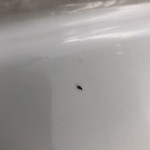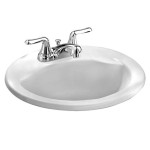My Bathroom Sink Stinks: Identifying the Source and Implementing Solutions
An unpleasant odor emanating from a bathroom sink is a common household issue. The source of the stench is often organic matter accumulating within the drain system. This accumulation, primarily composed of hair, soap scum, toothpaste residue, and other debris, provides a breeding ground for bacteria and fungi, leading to the production of volatile organic compounds (VOCs) that generate the foul smell. Addressing this problem requires a systematic approach, involving identifying the likely culprit and implementing targeted cleaning and preventative maintenance strategies.
Ignoring the initial signs of a smelly bathroom sink can lead to more significant plumbing issues. Over time, the accumulation of debris hardens and restricts water flow, potentially leading to a clogged drain. Furthermore, the persistent presence of bacteria and fungi can contribute to unsanitary conditions within the bathroom environment. Therefore, prompt action is advisable to mitigate these potential consequences.
Principal Causes of Bathroom Sink Odors
Several factors can contribute to the development of an unpleasant odor originating from a bathroom sink. Addressing this issue requires a comprehensive understanding of the potential causes to implement the correct solution.
Biofilm Buildup: Biofilm is a slimy, sticky substance composed of microorganisms, including bacteria, fungi, and protozoa. It forms on surfaces exposed to moisture and nutrients, such as the interior walls of drainpipes. In a bathroom sink drain, the ideal conditions for biofilm growth are readily available. The constant introduction of water, combined with the presence of organic debris and lukewarm temperatures, promotes the proliferation of these microorganisms. As the biofilm matures, it releases gases such as hydrogen sulfide, ammonia, and methane, all of which have distinct and unpleasant odors. The thickness and extent of the biofilm directly correlate with the intensity of the emitted smell. Regular cleaning is crucial to disrupt the biofilm's formation and prevent the buildup of odor-causing compounds.
Hair Accumulation: Hair is a significant contributor to drain clogs and odors. Due to its fibrous structure, hair tends to catch on rough surfaces within the drainpipe, acting as a net to trap other debris. Over time, this accumulation forms a dense mass that restricts water flow and provides a substantial food source for bacteria. As the trapped hair decomposes, it emits a sulfurous odor characteristic of rotting organic matter. Furthermore, hair often contains residues of soaps, shampoos, and conditioners, which further contribute to the accumulation of organic material within the drain system. Implementing preventative measures, such as using drain screens to catch hair, is essential to minimize this problem.
Soap Scum Deposition: Soap scum is a hard, insoluble residue formed when soap reacts with minerals present in hard water, particularly calcium and magnesium. This residue adheres to the interior walls of the drainpipe, creating a rough surface that attracts and traps other debris, including hair and organic matter. Soap scum itself does not typically produce a strong odor, but its presence contributes to the overall accumulation of odor-causing substances. Furthermore, soap scum can harbor bacteria and fungi, providing them with a protected environment to thrive. Using liquid soaps that are less prone to forming scum, or installing a water softener to reduce mineral content, can help minimize soap scum buildup.
P-Trap Problems (Dry or Siphonage): The P-trap is a U-shaped section of the drainpipe located beneath the sink. It is designed to hold a small amount of water, which acts as a barrier to prevent sewer gases from entering the bathroom. If the P-trap dries out due to infrequent sink usage, or if the water is siphoned out due to pressure fluctuations in the plumbing system, sewer gases can directly enter the bathroom, producing a strong, unpleasant odor. Identifying whether the P-trap is the source of the odor is crucial. If the sink is rarely used, simply running water down the drain for a few minutes will replenish the P-trap and eliminate the odor. However, if the P-trap is frequently siphoning, it may indicate a venting issue in the plumbing system that requires professional attention.
Ventilation Issues: Every plumbing system relies on a system of vents to regulate air pressure and allow wastewater to flow freely. These vents typically extend through the roof of the building and allow air to enter the drainpipes, preventing a vacuum from forming as water drains. If these vents become clogged or blocked, it can disrupt the proper flow of wastewater and cause negative pressure within the drain system. This negative pressure can siphon water from the P-traps of sinks and toilets, allowing sewer gases to enter the building. Furthermore, inadequate ventilation can promote the buildup of pressure within the drainpipes, forcing gases and odors through any available opening, including around sink drains. Addressing ventilation issues typically requires the expertise of a qualified plumber to inspect and clear any blockages in the vent pipes.
Cleaning and Deodorizing Methods
Once the most likely cause of the odor has been identified, implementing appropriate cleaning and deodorizing methods is necessary to eliminate the smell and prevent its recurrence.
Hot Water Flush: A simple and often effective method is to flush the drain with a large amount of hot water. Boiling water is preferable, but caution should be exercised to avoid damaging plastic pipes. Pouring several gallons of hot water down the drain can help to loosen and dissolve accumulated debris, including soap scum and biofilm. The heat of the water also helps to kill bacteria and fungi that contribute to the odor. This method is particularly effective for addressing minor odor problems caused by recent buildup.
Baking Soda and Vinegar Solution: A common and environmentally friendly cleaning solution involves using baking soda and vinegar. Pour approximately one cup of baking soda down the drain, followed by one cup of white vinegar. The combination of baking soda and vinegar creates a chemical reaction that produces carbon dioxide gas. This gas helps to scrub the interior walls of the drainpipe and dislodge debris. Allow the mixture to fizz for about 30 minutes, then flush the drain with hot water. This method is effective for breaking down organic matter and neutralizing odors. Repeated applications may be necessary for stubborn odors.
Enzyme-Based Drain Cleaners: Enzyme-based drain cleaners contain enzymes that break down organic matter, such as hair, grease, and food particles. These cleaners are typically safer for pipes than chemical drain cleaners, as they do not contain harsh chemicals that can corrode or damage plumbing. Follow the manufacturer's instructions carefully when using enzyme-based drain cleaners. Typically, the cleaner is poured down the drain and allowed to sit overnight before flushing with water. These cleaners are particularly effective for addressing odors caused by the decomposition of organic material within the drainpipe.
Mechanical Drain Cleaning (Plunger or Drain Snake): For more persistent clogs and odors, mechanical drain cleaning methods may be necessary. A plunger can be used to create suction and dislodge blockages within the drainpipe. Ensure that there is enough water in the sink to cover the cup of the plunger, and then repeatedly plunge the drain to create pressure. A drain snake, also known as an auger, is a flexible tool that can be inserted into the drainpipe to break up and remove blockages. Carefully insert the drain snake into the drain and rotate it to break apart the clog. Once the clog is broken up, flush the drain with water to remove the debris. These methods are effective for removing larger blockages and accumulated debris that contribute to odors.
Cleaning the P-Trap: If the odor is suspected to be originating from the P-trap, it may be necessary to disassemble and clean the P-trap. Place a bucket underneath the P-trap to catch any water that spills out. Loosen the slip nuts that connect the P-trap to the drainpipes and carefully remove the P-trap. Empty the contents of the P-trap into the bucket and thoroughly clean the P-trap with soap and water. Remove any accumulated debris, such as hair and soap scum. Once the P-trap is clean, reassemble it, ensuring that the slip nuts are tightened securely to prevent leaks. Flushing the drain with water will then refill the P-trap and restore its function as a barrier to sewer gases.
Preventative Measures for Maintaining a Fresh-Smelling Sink
Preventing the recurrence of bathroom sink odors requires the implementation of consistent preventative maintenance strategies.
Regular Flushing: Regularly flushing the drain with hot water can help to prevent the buildup of debris and biofilm. Running hot water down the drain for a few minutes each week can help to dislodge and dissolve any accumulated material, preventing it from hardening and contributing to odors.
Drain Screens: Installing drain screens in the sink can help to prevent hair and other debris from entering the drainpipe. Drain screens are inexpensive and easy to install, and they can significantly reduce the amount of material that accumulates in the drain. Regularly clean the drain screens to remove any trapped debris.
Avoid Pouring Grease Down the Drain: Avoid pouring grease, oil, or other fatty substances down the drain. These substances can solidify within the drainpipe and contribute to clogs and odors. Instead, dispose of grease and oil in the trash.
Periodic Baking Soda and Vinegar Treatment: Periodically treating the drain with a baking soda and vinegar solution can help to prevent the buildup of organic matter and neutralize odors. Repeating this treatment every few weeks can help to keep the drain clean and fresh-smelling.
Proper Ventilation: Ensure that the bathroom is properly ventilated to remove excess moisture and prevent the growth of mold and mildew, which can contribute to odors. Use the exhaust fan during and after showers and baths, and consider opening a window to improve air circulation.
Professional Plumbing Inspection: Scheduling regular plumbing inspections can help to identify and address potential problems before they become serious. A qualified plumber can inspect the drain system, identify any issues with ventilation or P-traps, and recommend appropriate solutions to prevent odors and other plumbing problems.
By understanding the potential causes of bathroom sink odors and implementing appropriate cleaning and preventative maintenance strategies, homeowners can effectively eliminate unpleasant smells and maintain a fresh and hygienic bathroom environment.

How To Clean A Stinky Sink Drain By Home Repair Tutor

How Can I Help A Stinky Bathroom Sink Drain Cleaning More

What Causes Bathroom Drains To Smell

Pin On Clean Organize

How To Get Rid Of The Sewer Smell From A Bathroom Terry S Plumbing
What The Heck In This Ugly Black Stuff My Wife Has Been Complaining About A Nasty Smell Coming From Her Bathroom Sink Since We Moved Into Our New House Two Years Ago

How To Clean Stinky Drains Liquid Plumr

How Can I Help A Stinky Bathroom Sink Drain Cleaning More

Sewer Smell In Bathroom Solved Bob Vila

How To Clean A Stinky Sink Drain Home Repair Tutor
Related Posts







